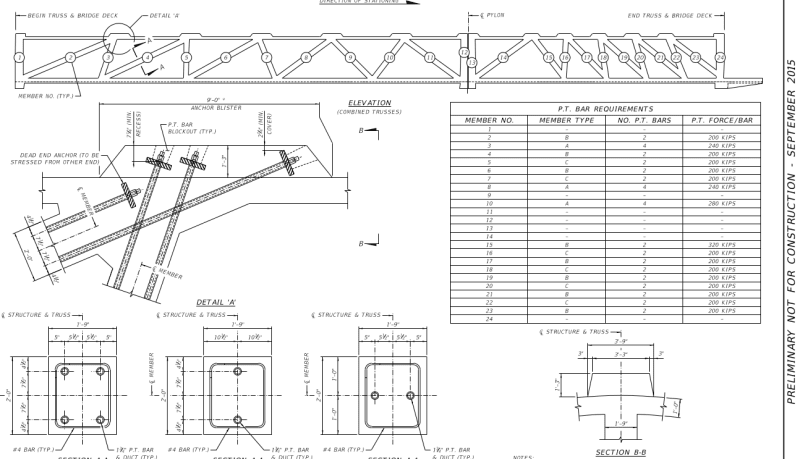wiktor said:
missing analyses of the truss in the construction stage
Since the bridge has high strength tendons inside the vertical and sloping truss members and a table is enclosed in the MCM/FIGG proposal document, based on which the bridge contract was awarded, it would be difficult for the public to suggest the major calculation is lacking during construction.
The above tendon forces are expected to be installed in the bridge at its final position for the working condition. Before the bridge was lifted off its casting position part of the tendon forces would have been applied to give strength to the bridge for its relocation operation. When the bridge had been lowered into the abutments the tendon forces would have to be adjusted. Indeed the bridge collapsed during the tendon adjustment phase.
It would be unimaginable that calculation was not performed in each stage to arrive at the amount of tendon forces needed. Thus the investigator can anticipate there will be essential calculation performed. Whether the computation is correct or adequate for the purpose is another matter.
Personally the evidence of cracks, by the geometrical formation, extent, severity and location, indicate a connection failure. Unlike structural steel, where one can perform calculation on each connection, in reinforced concrete the connection calculation is rarely done. It is like forming a hole in a concrete slab the designer is expected to detail four trimmer bars across the corners. An experienced designer would know something is needed to beef up this connection if one examines its stress path. Whenever structural calculation is performed on reinforced concrete each joint will have to be assumed rigid and monolithic so that the forces, bending moments and shears are held in equilibrium by the members at that nodal point. I expect the designer in this case to be criticized for failing to realize the basic design assumption in the field.
I do have sympathy for the designer as checking the structural adequacy of a connection is not routine in reinforced concrete design. The design with both reinforcing steel and post tensioning tendons is respectable, the bridge arrangement is elegant and the fake stayed cable (using steel pipes) is innovative. The bridge would have worked if the designer was given more room to put a bit more concrete and rebar at the cracked location to dissipate the highest stresses in the structure. He could also had insisted the post tension anchors of the Member 11&12 and the deck to be structurally linked to those in the deck locally, say by a gusset plate or by welding.
Engineers learn from mistakes. There are many good lessons to be learned from this bridge.

